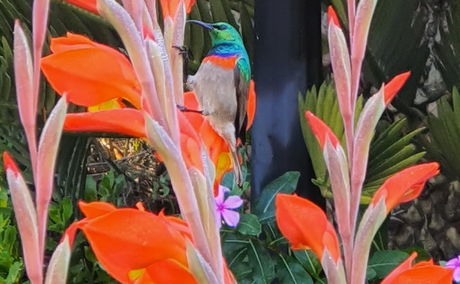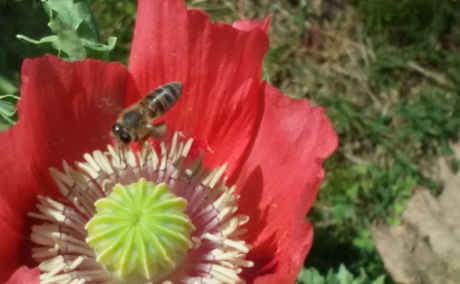Hulle kom oor die weg op twee, vier, ses of selfs agt bene, met of sonder vlerke en vere. Hulle vreet en word gevreet. Hulle is Blaauwheim se tuinbewoners.
Chameleons in the Blaauwheim garden, Part 2

Amazing animals.
Local visitors to Blaauwheim often tell us that they do not have chameleons in their own gardens. Wrong! One only needs to be sensitised that they might be in your area to start seeing them. They are rather common in Somerset West gardens that have healthy eco-systems and a variety of flowering plants and shrubs which attract insects such as bugs, flies and butterflies. Once you have succeeded in spotting one chameleon, you will probably see another one more easily. Adult males (like this exotic chap below) have elongated bodies whilst the females tend to have more rounded figures.

They also need water. Chameleons cannot go to a birdbath for a drink of water. They drink drops suspended from leaves or water collected on leaves with those amazing tongues. I spray the shrubs that they frequent with water from a bottle. On hot days they really come out of the woodwork for those precious drops of water.

Chameleons are active during the day. The best time to spot them is early in the morning or late afternoon. Being reptiles, they need sunlight to warm their bodies. In winter they can be out all day long and can be seen all over the garden basking in the sun. They do not like to be exposed to wind. They will take shelter on the leeward side of a shrub when it is windy. This often makes for a good number of sightings and if it can be shared with guests, it is so much more rewarding.

Part 3 to follow soon.
Further Reading
The birds and the bees, the bugs and the beetles.
Lente is tyd vir vernuwing. Dit is ook 'n tyd om met groot verwagting te hoop op die toekoms.





Share This Post